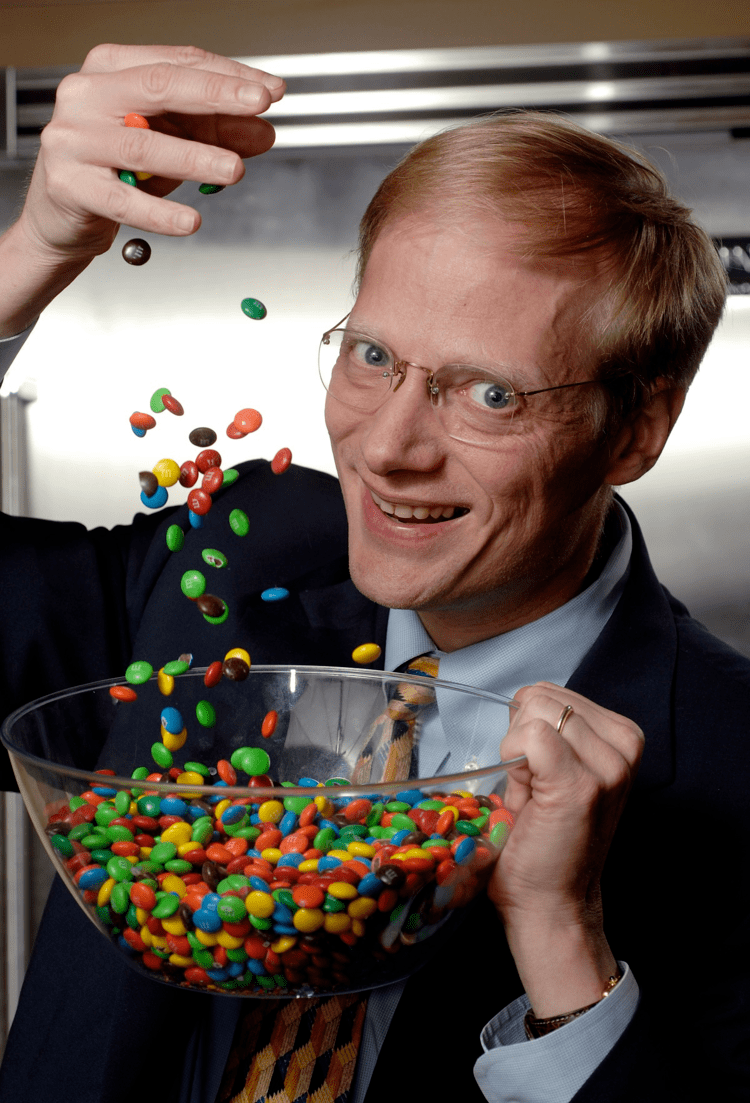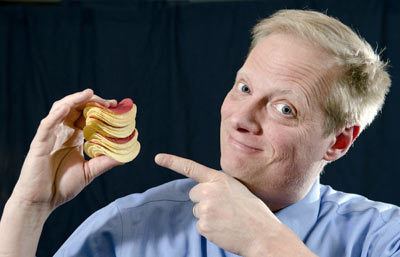Name Brian Wansink | Role Professor | |
 | ||
Institutions USDA's Center for Nutrition Policy and Promotion, Food and Brand Lab, Cornell University Known for Food behavior and psychology Notable awards ABC World News Person of the Week(January 4) 2008; Fitness magazine's "Fit 50" 2008; Ig Nobel Prize, 2007 Fields Consumer behaviour, Marketing Books Mindless Eating, Slim by Design: Mindless, Marketing Nutrition, Asking Questions: The Defin, Consumer Panels - Second E Similar People Seymour Sudman, Norman Bradburn, Andrew Dickson White | ||
From mindless eating to mindlessly eating well brian wansink at tedxuvm 2012
Brian Wansink (born June 28, 1960) is an American professor in the fields of consumer behavior and nutritional science. He is the former executive director of the USDA's Center for Nutrition Policy and Promotion (CNPP) (2007–2009) and now holds the John S. Dyson Endowed Chair in the Applied Economics and Management Department at Cornell University, where he is director of the Food and Brand Lab.
Contents
- From mindless eating to mindlessly eating well brian wansink at tedxuvm 2012
- Brian wansink slim by design
- Biography
- Research areas
- Critique and Response
- Ig Nobel Prize
- Books
- References
Wansink is best known for his work on consumer behavior and food marketing and for popularizing terms such as "mindless eating" and "health halos." He is the author of over 100 academic articles and books, including the books Mindless Eating: Why We Eat More Than We Think (2007) and Slim by Design (2014). He received the 2007 humorous Ig Nobel Prize for his Bottomless Bowls Study, was named ABC World News Person of the Week on January 4, 2008, and was featured in Fitness Magazine's Fit 50 list in 2008.

In 2017, critics questioned the validity of research from the Food and Brand Lab, arguing that errors were found in several Wansink co-authored papers. In response, Wansink published a statement responding to each purported error, released data and code for all the studies in question, and developed stricter lab procedures.
Brian wansink slim by design
Biography
Wansink was born in Sioux City, Iowa. He received a B.S. from Wayne State College (Nebraska) in 1982 and an M.A. from Drake University in 1984, followed by a Ph.D. in Consumer behaviour in 1990 from Stanford University.
He was a Marketing Professor at the Tuck School of Business at Dartmouth College (1990–1994) and the Wharton School at the University of Pennsylvania (1995–1997), and he was a Marketing, Nutritional Science, Advertising, and Agricultural Economics Professor at the University of Illinois at Urbana-Champaign (1997–2005) before moving to Cornell University (2005 to date).
Wansink founded the Food and Brand Lab in 1997 at the University of Illinois and the Consumer Education Foundation in 1999. In 2005, he moved both to Cornell University in Ithaca, New York, where he founded the Cornell Food and Brand Lab.
In 2007, Wansink released the NY-Times best-selling book Mindless Eating.
From 2007-2009, Wansink took a leave of absence from Cornell to accept a White House appointment as the fourth Executive Director of the USDA's Center for Nutrition Policy and Promotion, where he oversaw the development of the 2010 Dietary Guidelines, the Healthy Eating Index, and the Cost of Raising a Child Index. He was also charged with promoting the Dietary Guidelines for Americans, in the form of MyPyramid.
In 2009, he helped launch the Smarter Lunchroom Movement, a grassroots organization focused on nutrition in school lunches.
In 2011, Wansink was elected to a one-year-term as president of the Society for Nutrition Education.
In 2014, Wansink released the book Slim by Design and also launched the Global Healthy Weight Registry. The Global Healthy Weight Registry helps to discover how perpetually slim people have avoided gaining weight in an effort to provide potentially useful lessons for the majority of the population.
Research areas
A consumer psychologist, Wansink is best known for his work on food psychology and eating behavior. This work focuses on how the environment leads or even tricks people into buying and eating food in ways which they are unaware. While some of these insights are directed toward responsible food manufacturers and marketers, the majority are focused specifically at parents, dieters, and at the medical and nutrition community. Using a combination of lab studies and field studies, he has used movie popcorn, refillable soup bowls, bartender glasses, candy dishes, Chinese buffets, and ice cream socials to show how various environment cues influence the food intake of unknowing consumers. Although such environmental factors appear unrelated, they generally influence intake by inhibiting consumption monitoring and by suggesting alternative consumption norms.
In contrast to focusing on the macro-food environment as being the cause of the American obesity problem, Wansink's work focuses on the intermediate micro-environment that he contends people can control—their home and their daily habits. In counterpoint to social criticism of the obesigenic nature of our "foodscape," recent work has focused on the more promising changes that can be made in what Wansink refers to as the obesigenic nature of our "kitchenscapes" and "tablescapes."
The studies from the lab inspired the development of100 calorie packs and the Small Plate Movement, as well as quantified a wide range of basic insights:
In examining the range of what is referred to as "mindless eating," Wansink has made contributions to three principal areas of food-related consumption: consumption norms, taste evaluation, and food selection.
Critique and Response
In January 2017, the validity of research from the Food and Brand Lab was called into question by Jordan Anaya and colleagues, after Wansink had written about asking a graduate student to "salvage" conclusions from a study which had shown null results, subsequently producing five papers from it, all co-authored with Wansink. Anaya and Tim van der Zee and Nicholas J L Brown analysed four of the five papers, and found a total of 150 questionable numbers . According to the critics, requests for access to the original data were denied by Wansink, who cited privacy issues over the anonymity of the participants. Anaya and colleagues later found errors in six other papers from the Food and Brand Lab. New York Magazine described the papers as "shockingly unprofessional" and expressed concern over the journals that published them.
Wansink announced an in-depth review of all disputed papers, after locating some of the original datasets, and intended to take steps to ensure such errors never happen again. On April 5, Wansink published a detailed analysis of the alleged errors, and concluded that most of them were the natural results of being field studies (where some participants did not reply to all questions), while some were data or transcriptions errors. He noted in many cases a single error had been counted multiple times in the critics' reports, when a headline error makes a whole list of numbers seem erroneous, where in fact it is a single error. In addition, Wansink developed and implemented a set of procedures which would prevent these errors from occurring again and conveniently anonymize and catalogue data to be easily shared by request For a few cases where a paper or chapter was similar in a degree to an earlier work of Wansink, he contacted the journals and asked them to fix it.
Ig Nobel Prize
Wansink is a 2007 recipient of the Ig Nobel Prize in Nutrition. The Ig Nobel prizes are a parody of the Nobel Prize and are awarded for achievements (or sometimes veiled criticisms thereof) that "first make people laugh, and then make them think." Wansink's award was issued for investigating people's appetite for mindless eating by secretly feeding them a self-refilling bowl of soup in the Bottomless Bowls Study. It has come to be known as the Bottomless Bowl Principle.
